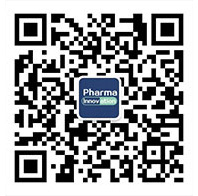COPENHAGEN – Children of mothers who experience anxiety during pregnancy or after giving birth are approximately twice as likely to develop hyperactivity even into their teenage years as those whose mothers have lower anxiety levels, new research suggests.
Results from a large scale, long-term study of more than 3000 children in the United Kingdom showed that medium-to-high maternal somatic anxiety between 18 weeks of pregnancy and up to 5 years postpartum was associated with a twofold increased risk for hyperactivity/inattention symptoms in offspring at 16 years of age.
However, maternal anxiety in the peripartum period was not significantly associated with attention levels when the children were 8½ years of age.
The differential finding for hyperactivity and inattention vs attentional levels alone "implies that hyperactivity but not inattention is associated with maternal anxiety," the investigators note.
However, the effects of anxiety on inattention could decrease as the child grows — and "higher intensity of exposure may be required to affect attentional skills," they add.
Lead author Blanca Bolea-Alamañac, PhD, assistant professor, Adult Psychiatry and Health Systems, University of Toronto, Ontario, Canada, told Medscape Medical News that the "interesting thing about anxiety symptoms having an effect on hyperactivity is that they are treatable," whether with medication or cognitive behavioral therapy.
She presented the findings in a poster here at the 32nd European College of Neuropsychopharmacology (ECNP) Congress.
Potential Explanations
Bolea-Alamañac noted that there are a number of potential explanations for an association between maternal anxiety and childhood hyperactivity.
First, "when the mother is anxious during pregnancy, are there any hormones that are being made by the placenta, which is a huge hormonal system, that affect how the brain is developing in utero?" she asked.
"It's called the fetal–brain programming hypothesis," she added, noting that there is evidence for similar kinds of associations for endocrine processes, "and this is just a theory that it may work for the central nervous system."
Another theory centers on the home environment.
"If your mum is very anxious, maybe you respond to the world in a different way," Bolea-Alamañac said. "Maybe you don't have the stimulus you should and you become hyperactive."
She added that hyperactivity is also very genetic. "If you've got the genes, you've got the genes." However, if a child has the genes and the mother is not anxious, it's possible that "you don't express all the symptoms," she said.
"So it gives a window of opportunity to act on it, and we have different things that we can do," Bolea-Alamañac said.
Previous studies have indicated that prenatal exposure to anxiety is linked to an increased risk for offspring hyperactivity at 4 years of age, as well as potentially at 7 years.
However, it is not clear whether the intensity of exposure to maternal anxiety at different points in the prenatal and postnatal period has an impact on the association with hyperactivity, and whether the effects persist long term.
The researchers therefore studied participants in the Avon Longitudinal Study of Parents and Children (ALSPAC), examining the relationship between maternal somatic anxiety symptoms during pregnancy and after delivery and offspring hyperactivity symptoms and inattention.
Anxiety was measured using the Crown Crisp Experiential Index, with factor analysis used to determine somatic anxiety levels at 18 weeks and 32 weeks of pregnancy, and 8 weeks, 8 months, 2 years, and 5 years postpartum.
Offspring hyperactivity and inattention symptoms were assessed using the hyperactivity-inattention subscale of the Strengths and Difficulties Questionnaire (SDQ) at age 16 years. The Test of Everyday Attention for Children (TEA-Ch) was used to examine attentional skills at 8.5 years of age.
ALSPAC Cohort
The ALSPAC birth cohort contains 14,775 live births, from which maternal somatic anxiety data up to 5 years postpartum could be obtained for 8725 children. In all, 3417 children completed hyperactivity/inattention assessments at 16 years of age.
Results showed that approximately 5% of children born to women with low anxiety symptoms had hyperactivity symptoms at 16 years compared with around 11% of children born to mothers with moderate anxiety and the same proportion of children born to mothers with high anxiety.
Compared with low maternal somatic anxiety, medium and high maternal anxiety were significantly associated with hyperactivity/inattention symptoms at 16 years on the SDQ hyperactivity-inattention subscale.
Adjusting for early parenthood, occupational social class, maternal education, the sex of the child, alcohol use during pregnancy, and stressful life events, medium maternal somatic anxiety was associated with an odds ratio (OR) for offspring hyperactivity/inattention of 1.87 (P < .001).
Among women with high maternal anxiety, the OR for offspring hyperactivity/inattention at 16 years of age was 2.20 (P = .001).
However, there was no significant association between maternal somatic anxiety and TEA-Ch scorers on the Sky Search subtest at 8.5 years, either for medium (P = .314) or high (P = .279) anxiety levels.
A similar pattern was seen for TEA-Ch scores on the Opposite Worlds subtest, both for medium (P = .477) and high (P = .886) anxiety levels.
Adds to an "Emerging Picture"
The study is "very interesting...especially given the longitudinal and trans-generational character and its large sample size," Andreas Reif, MD, PhD, University Hospital Frankfurt, Frankfurt am Main, Germany, said in a press release.
"As with all studies of this design, one however must be cautious not to mix association with causation," he added.
Reif noted that previous research has shown that attention deficit hyperactivity disorder (ADHD) and anxious traits are correlated on the genetic level.
So, "the finding could well be reflective of shared genetic influences. However, it is also important to stress that this study is not on anxiety disorders or ADHD, but rather on traits related to these disorders," he said.
"These data, however, further add to an emerging picture that ADHD/hyperactivity, anxiety and bipolar disorder are linked," Reif concluded.
Bolea-Alamañac noted that there are several study limitations, including that it was reliant on the mothers rating their children as hyperactive. However, she noted that previous studies have indicated that mothers appear to be "very genuine raters."
In addition, there was only one child in each family in the study, "so we can't look at effects on other siblings but there is very interesting data" on the impact of a stressful event on childhood hyperactivity, such as following the 1998 North American ice storm and the 1986 Chernobyl nuclear disaster.
Bolea-Alamañac pointed out that the investigators took into account a "huge list" of stressful life events in the current analysis, and "corrected for almost everything that could be important in a mother's life."
The "big limitation," however, was that the investigators did not know whether the mothers or fathers had ADHD.
That said, it could be that childhood hyperactivity may be worse if the mother has ADHD and is anxious, Bolea-Alamañac noted. "So again, that's something you can act on."
PS:4th China Pharma IP Summit 2019
(CPIPS2019) organized by Shanghai YIP Events, Supported by Pharma IP Right
Research Committee of Chinese Pharmaceutical Association, which will be held on
23rd-25th , Oct at Primus Hotel Shanghai Hongqiao China this year. which
presents an unrivalled gathering of in-house patent counsel from established
and fledgling pharmaceutical and biotechnology companies coming together to
listen to updates on patent prosecution and enforceability from global
jurisdictions,
The conference
provides delegates with an invaluable opportunity to gain insight into the
sector issues of critical current importance; listen to best-in-class case
studies; keep abreast of the likely forward impact of key judgements and
political jolts; and network with global patent peers.
As a dedicated event
to pharmaceutical intellectual property, In the past three years we gathered
more than 1000 attendees from relevant government departments, industry
associations, global and china local pharma/biotech companies, law firms, IP
agencies, IP solution providers and so on. Our topics covered the IP protection
in all over the world, include mainly China, Europe, US, Japan, South Korea,
India and Emerging Markets. We hope CPIPS could be a good networking and
sharing platform for Industry peers, For more information please refer to below
and attached agenda or visit conference website: www.pharmaip.cn

